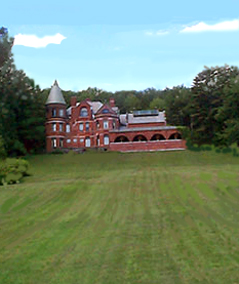 The Dutch neo-renaissance gable and Romanesque Revival porte-cochere in front of Wilson Castle | |
 | |
| Location | 2708 West Street Proctor, Vermont |
|---|---|
| Coordinates | 43°36′48″N73°01′46″W / 43.6133°N 73.0295°W |
| Type | Historic house museum |
| Website | wilsoncastle |

Wilson Castle is a nineteenth-century estate located at Proctor in the U.S. state of Vermont. The house was built in 1885 in a mix of nineteenth-century architectural styles including Dutch neo-renaissance, Scottish baronial, Queen Anne, and Romanesque Revival. It is now operated as a house museum and is open late May until late October for an admission fee.